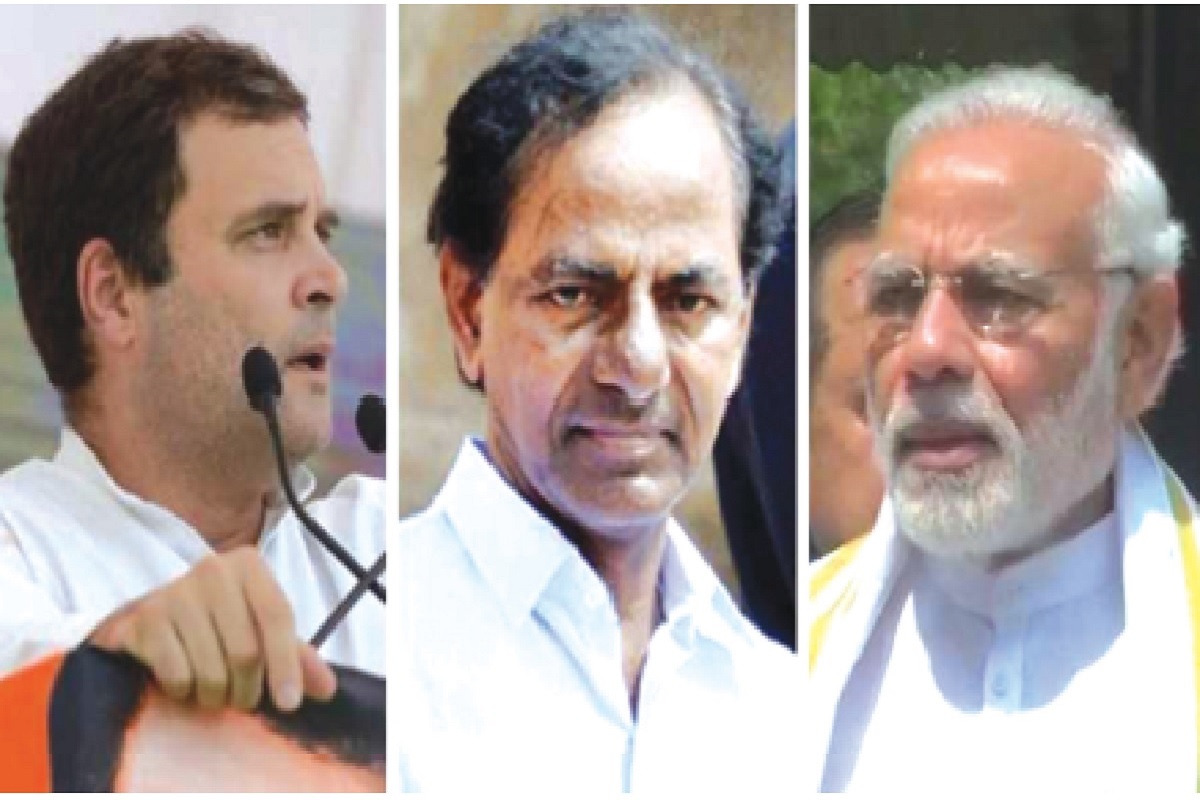Eyebrows are raised at the way the impatient opposition is trying to make a bid to form the next government even before the polls are completed.
Obviously, they want to send a signal to voters in the next two phases of polls on May 12 and May 19 that a BJP win is not a given. Even the opposition unity moves were divided as two parallel efforts were going on this week to form a coalition in the post-poll scenario although they could not form a national coalition earlier.
Two Telugu-speaking chief ministers are competing with each other in this regard. One was the Telangana chief minister K.Chandrashekar Rao’s bid to form a federal front. He met his Kerala counterpart Pinarayi Vijayan and spoke to Karnataka chief minister H.D. Kumaraswamy about the federal front. He had also been talking to West Bengal chief minister Mamata Banerjee and Odisha chief minister Naveen Patnaik.
His efforts to rope in SP chief Akilesh Yadav and BSP supremo Mayawati have not succeeded so far. Interestingly, Andhra Pradesh chief minister Chandrababu Naidu has also been meeting various leaders for forming a national coalition after the poll with a view to stake claim to form the next government. He came to Delhi and held consultations with Congress President Rahul Gandhi and went to Kolkata and met Mamata Banerjee.
There is a plan to organise a meeting of 21 opposition parties on May 21, two days ahead of the poll results to strategise post-poll moves. The Left leaders also met Congress leader Ahmed Patel. While Chandrababu’s front would have Congress as the anchor, KCR wants a non-BJP, non-Congress Federal front. Both Chandrababu and KCR are hoping to become kingmakers if not king. Obviously they are influenced by opinion poll surveys, which do not give the ruling BJP a majority though they predict it might emerge as the single largest party.
Perhaps their own assessment in different states might have given them hope to form the next coalition government at the Centre. The opposition leaders want to request the President of India to invite them first if the BJP does not have the majority though they do not have a prepoll national alliance. It all depends on the number of seats the BJP gets.
If it is about 200 to 220 and along with its allies the BJP tally goes up to 250, then the BJP will form the government making up the gap by getting support from parties like the BJD and even TRS and YSRCP. The BJP is confident of winning a majority. BJP General Secretary Ram Madhav has dismissed attempts by these leaders claiming, “Many leaders like KCR, and Chandrababu Naidu dream of becoming kingmaker.
When we have king, where is the need for a kingmaker? “If the polity is split, then the job of the President becomes difficult, as he has to look at the various possibilities. Forming the next government for the opposition coalition will not be easy. The first challenge is to find an acceptable prime ministerial face. Almost all the regional satraps have been nourishing prime ministerial ambitions.
This is true of Mamata Banerjee, Mayawati, Chandrababu, KCR, Deve Gowda, Sharad Pawar and so on. As in 1996, it would be difficult for the satraps to agree on a single name. Secondly, regional interests would overshadow national interests and every regional leader would demand his or her pound of flesh for support. This has happened in 1989, 1996 and even 1998. Thirdly, with no common bond among them except power, there will be inherent contradictions and each constituent will be pulling in different direction. With all these difficulties even if they come together, past experience shows that the government will not last long.
As for the BJP too, if it goes for a coalition, the same problems will arise. The NDA-1 experiment did not succeed in 1998 because of the inherent contradictions but in 1999, when he came back, Vajpayee was flexible and was able to run the government for five years. After getting used to a single party majority government, the BJP will find it difficult to satisfy all the regional interests in the coalition.
The authority of the prime minister also will not be the same as it was in 2014-2019. India has seen coalition governments in 1977, 1989, 1996, 1998 and 2004. The single party government came after almost 30 years in 2014 when Modi became the prime minister.
The coalition experiment has its own problems in a country where the polity is divided. It will help if the people of India vote for a stable government rather than give a split verdict. May 23 will show whether India is moving towards a hung parliament or a single party majority rule.











